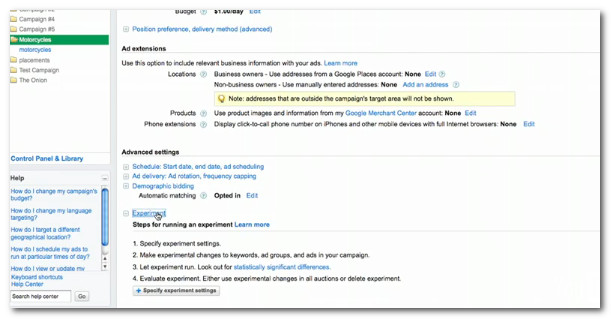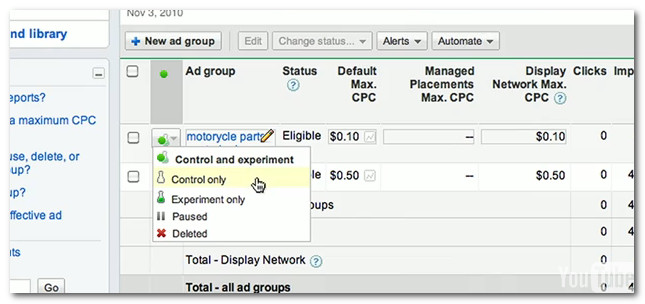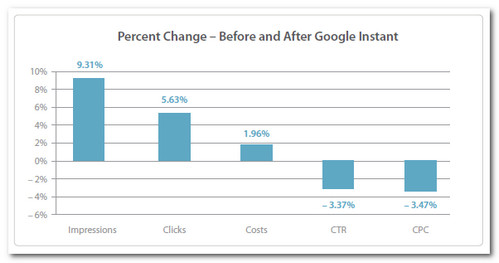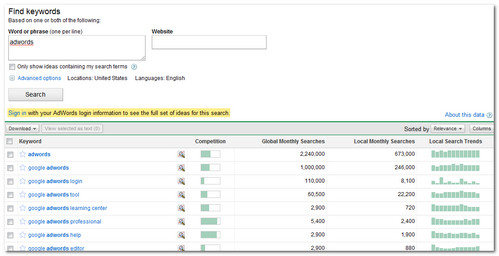
To get the most out of PPC, we not only need to know the best techniques to use, we need to understand why those techniques were devised. The techniques often discussed in this blog, and in our training program, are based on a theory of how the PPC environment hangs together.
Let’s take a look under the hood.
The Search
Search engines are about the specific.
A searcher forms a keyword phrase, based on a concept they have in their head. This is the function of language, words being a specific representation of concepts. The searcher then types words into a search engine, hoping their concept matches with the search results they expect to see.
Contrast this considered action with social media, such as Facebook. Facebook is mostly passive. Facebook data streams down the page, like a river. The user has little preconceived idea about what to expect, other than seeing what their friends are up to. The user clicks on something that looks interesting that they probably didn’t know they were looking for. They then might interact with their friends.
The search environment, on the other hand, is an active, solitary and considered one. The searcher is involved in a hunt.
Concept To Keyword
There are many different ways to say something.
A woman wants to go on holiday. That’s her concept. She turns to Google. She needs to reduce her concept to a search phrase. She may type in “vacation ideas”. Or, she may already know where she wants to go. She types in “hotels in Venice Italy”. She rephrases. “boutique hotels Venice Italy”.
Her friend, who wants to come on holiday with her, is also searching using Google. She types “where can I find great places to stay in Italy?”.
From the same concept to keyboard, the number of keyword phrases are virtually endless. Even if people share the exact same concept, they’ll find many different ways to express it. Some people may be very specific. Some people may be general. Almost everyone will refine their search query in an effort to force the search results match the concepts in their head.
Is the searcher looking for information? Looking to buy something? Is the searcher a do-it-yourself type? Does the user want things done for them?
This is the reason why we need to vary the copy of ads and landing pages. For PPC to work well, everything must match the concept the search user holds in their head at the time of the search. The ad text, the landing page, and the offer.
That’s a big ask. It is hard to read people’s minds. At best, we look to align our offer with their concept. But enough theory.
Let’s translate this into usable technique.
1. Mirror The Concept
Repeat the keyword term in the ad copy and on the landing page. Make it prominent. You’re likely doing this already.
The reason we do it is that it serves as an affirmation i.e. the searcher has found the right place.
2. Bring The User In On The Most Relevant Page
The most relevant page is often not your home page. It is a page that relates directly to the keyword query. It is likely you will use many different landing pages, aimed at people who express their concept differently, and have different needs.
For example, the travel searcher may be undertaking research. They aren’t ready to buy. So ad copy aimed at a searcher making purchase won’t work, and neither will the landing page. A travel merchant may offer this type of searcher a free guide book, or detailed information, which the searcher is encouraged to bookmark. The travel merchant then has an opportunity to sell to the searcher at a later date.
The alternative is a click-back, as the travel merchant has provided this searcher with nothing useful.
We’re aligning our offer with the concept the user holds in their head.
3. Assume Nothing
The searcher may know nothing about you company. They searcher has probably never seen your site. They need to be able to grasp what you’re about immediately.
So the navigation, if it is there at all, needs to be obvious. Personally, I strip all navigation out, leaving only the options that relate directly to the query.
A searcher needs to understand your page at a glance. Don’t assume they’ll read. They’ll likely scan.
4. Think Visual
Because a searcher is likely to scan, think visually. What is the point their eye is scanning to?
A lot of landing page advice is based on old, direct-marketing copy-writing styles.
The problem with applying these dense copywriting styles to the web is that web users demand the “quick hit”. The searcher isn’t in a relaxed, considered reading mode. If they’ve come from search, they’re in a hunting mode. They’re in the active process separating the wheat from the chaff.
Unlike a magazine, the searcher doesn’t have to read from one page through to the end page, linear fashion, considering each page as they go. They can be on any one of millions of other pages within a click.
The quick hit they demand in order to pay attention to you is likely to be visual. Use images. Use big headings. Use a layout that “scans” well. Avoid dense text, unless you’ve hooked people in with a big heading first.
5. Double Use Landing Page
Often, it will be very difficult to pin down what the user wants. Do they want more information? Do they want to buy now?
You can offer them both options on the one landing page. There is a lot of cross-over in the search types, as people’s intentions can be fluid.
6. Don’t Advertise At, Talk With
This is not an intrusion medium, like radio and television. It’s about alignment. It’s about aligning what you have with what they need.
Failure to do so results in a click back, or no click at all.













